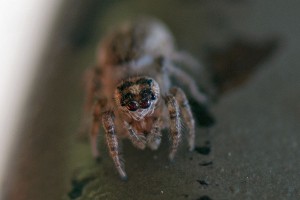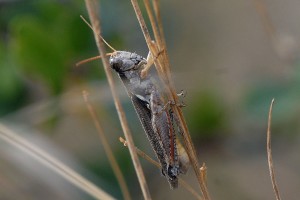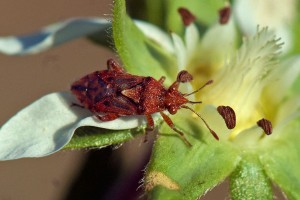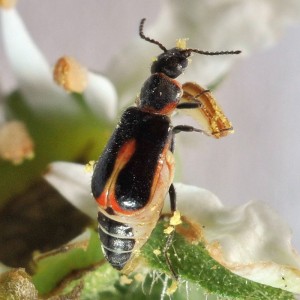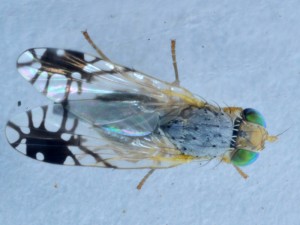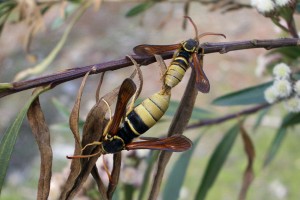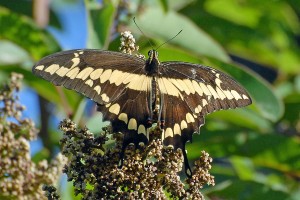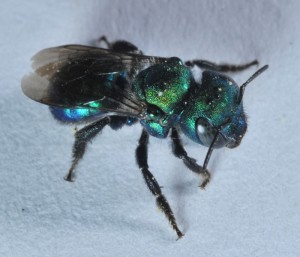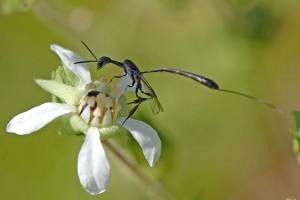We’ve recently updated the BFS invertebrate list, and I’m afraid that our blog posts have not kept pace with our new invert finds. Altogether since our last invert blog update, we’ve added an additional 57 taxa, including 3 spiders, 1 silverfish, 1 dragonfly, 2 grasshoppers, 6 bugs, 10 beetles, 10 flies, 5 moths, 3 butterflies, 5 bees, and 11 wasps.
Many thanks to everyone who’s helped observe, photograph, collect, and identify these inverts, including Hartmut Wisch; Doug Yanega, UC Riverside Entomology Museum; Jim Hogue, Cal State Northridge Biology Department; Molly Rightmyer Gee, San Diego Natural History Museum; Andy Hamilton, Canadian National Collection of Insects, Arachnids and Nematodes; John Ascher, American Museum of Natural History; Andy Calderwood, Ventura County Agricultural Commissioner’s Office; David Furguson, Rio Grande Botanic Garden; Adriean Mayor, Great Smoky Mountains National Park; David Smith, Smithsonian Institution; and the many folks at BugGuide.
Here’s the complete list of new taxa with a sampling photos. Photos of most of the taxa are linked to the list.
Spiders:
- Aphonopelma “eutylenum type” (California Ebony Tarantula)
- Argiope aurantia (Black and Yellow Garden Spider)
- Thiodina hespera (a jumping spider)
Silverfish:
- Allacrotelsa spinulata (Texas Pine Silverfish)
Dragonflies:
- Libellula croceipennis (Neon Skimmer)
Grasshoppers:
- Melanoplus cinereus cyanipes (Grayish Sagebrush Grasshopper)
- Trimerotropis fontana (Fontana Grasshopper)
Bugs:
- Tribe Athysanini (a leafhopper)
- Pseudatomoscelis seriatus (Cotton Fleahopper)
- Xyonysius californicus (California False Cinch Bug)
- Apiomerus californicus (Bee Assassin)
- Liorhyssus hyalinus (Hyaline Grass Bug)
- Homaemus parvulus (a shield-backed bug)
Beetles:
- Mordella hubbsi (a tumbling flower beetle)
- Eupompha elegans perpulchra (Elegant Blister Beetle)
- Cryptocephalus castaneus (a case-bearing leaf beetle)
- Anambodera sp. (a metallic wood-boring beetle)
- Acmaeodera hepburnii (a metallic wood-boring beetle)
- Acmaeodera retifera (a metallic wood-boring beetle)
- Cryptocephalus sanguinicollis (a case-bearing leaf beetle)
- Attalus sp. (a soft-winged flower beetle)
- Eschatocrepis constrictus (a soft-winged flower beetle)
- Trichochrous sp. (a soft-winged flower beetle)
Flies:
- Anthrax varicolor (a bee fly)
- Aphoebantus mus (a bee fly)
- Apolysis sp. (a bee fly)
- Paracosmus edwardsii (a bee fly)
- Eristalis hirta (a syrphid fly)
- Palpada mexicana (a syrphid fly)
- Sphaerophoria sulphuripes (a syrphid fly)
- Syritta pipiens (a syrphid fly)
- Trichopoda pennipes (a tachinid fly)
- Trupanea jonesi (a fruit fly)
Moths:
- Paranthrene robiniae (Western Poplar Clearwing)
- Speranza austrinata (a geometrid moth)
- Digrammia irrorata (a geometrid moth)
- Eucosma sp. (a torticid moth)
Butterflies:
- Papilio cresphontes (Giant Swallowtail)
- Phoebis sennae (Cloudless Sulphur)
- Vanessa virginiensis (American Lady)
Bees:
- Oreopasites sp. (a cuckoo bee)
- Perdita (ventralis species group) (a mining bee)
- Triepeolus (verbesinae species group) (a cuckoo bee)
- Osmia (Subgenus Melanosmia) (a mason bee)
- Hylaeus sp. (a yellow-masked bee)
Wasps:
- Family Eurytomidae (eurytomid wasps)
- Philanthus gibbosus (a beewolf)
- Family Pompilidae (a spider wasp)
- Aporus sp.(a spider wasp)
- Ammophila sp. (a thread-waisted wasp)
- Prionyx parkeri (a thread-waisted wasp)
- Sphex ichneumoneus (a thread-waisted wasp)
- Sphex lucae (Great Golden Digger Wasp)
- Gasteruption kaweahense (a carrot wasp)
- Orasema occidentalis (a chalcid wasp)
- Leptochilus sp.(a euminid wasp)
